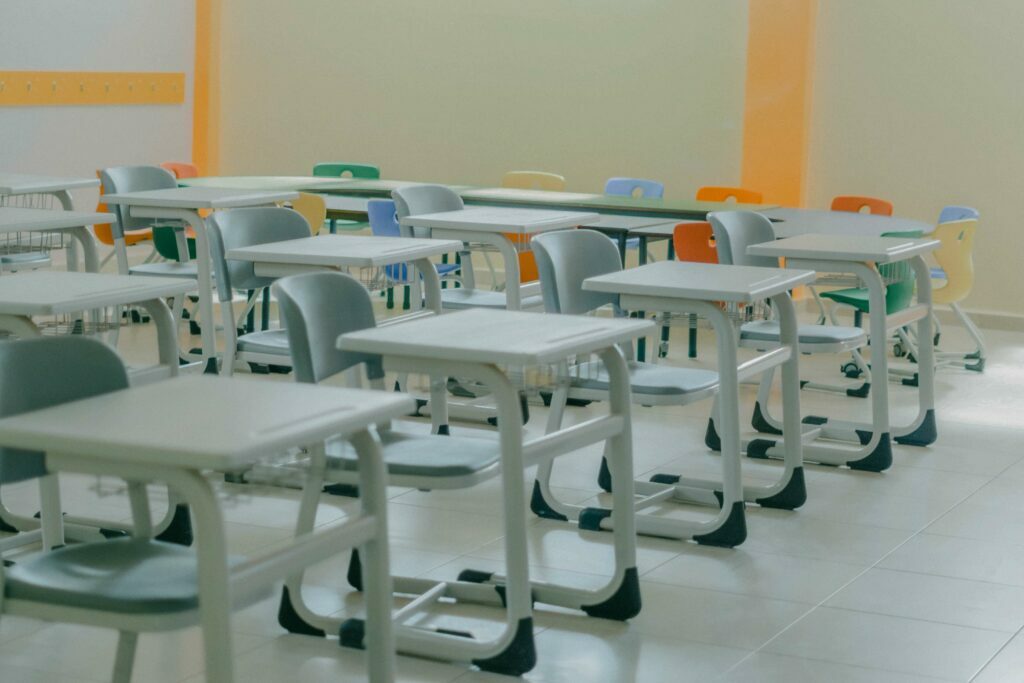Cleaning a classroom and a school facility makes a bigger impact than you might realize. Here are some ways your work is making a difference.
Cleaning a classroom might not feel like a very big deal. You sweep and mop the floors, wipe down desks, empty wastebaskets, dust the HVAC vents, and so on. It’s just part of your routine. And once you get the rhythm down, you probably don’t give it much thought.
What you may not realize is that the job you’re doing is making a tremendous difference in the lives of the teachers and students who use those rooms. Yes, it’s nice to have a clean desk to sit at. And yes, it’s helpful when the trash bin isn’t overflowing. But your work goes so much deeper than that.
Here are just some of the ways cleaning a classroom makes a positive impact on students, teachers, and the learning environment.
Keep up with school cleaning checklists, inspections, and more. Learn more today with a discovery call and find out how to make your cleaning operation more efficient, cost effective, and safer for everyone!

What cleaning a classroom really means
Does cleaning a classroom truly make learning easier? Students throughout history have learned in tiny one-room schools, in outdoor classrooms, sitting on bales of hay, and in the comfort of a climate-controlled, gleaming new building. What matters is the willingness of the student to learn and the ability of the teacher to teach. Right?
Well, that’s partially true. An interested student can learn anywhere. But the reality is that a clean classroom helps in numerous ways.
1. Students feel more appreciated. You don’t need a psychology degree to understand that students feel more appreciated in a clean, welcoming space. A tidy classroom lets students know that the school cares about them and their experience. As a result, they are more apt to pay attention.
2. Fewer distractions. In a world full of distractions like phones, earbuds, or pretty much any other good excuse to not pay attention, a clean classroom gives students less to look at. With fewer distractions comes better learning.
3. Improved test scores. Cleaning a classroom can make significant differences for students taking tests. In one study, researchers found that “students score between 1 to 2 percent lower on math and reading scores on days with high levels of pollen or fine airborne particulate matter,” in classrooms.
4. Improved attendance. Can cleaning a classroom decrease absenteeism and increase attendance? Yes. The Environmental Protection Agency (EPA) points out that “nearly 1 in 13 children of school-age has asthma.” Furthermore, indoor air pollutants, such as dust mites or mold, can trigger asthma symptoms. A clean classroom can positively impact this problem by reducing pollutants and helping students and teachers maintain their health so they can be present in school.
5. Improved attendance for teachers. Just like a clean space can help improve student attendance, it can help improve teacher attendance, too. Teachers aren’t exempt from the environmental pollutants that impact students. So a healthier, cleaner building benefits them, as well. Plus, when students have teachers present more consistently, they are able to learn better.
6. Safe environment. Classrooms have a variety of materials in them, some of which may be hazardous. Of course, this isn’t true in every classroom. Some, though, such as chemistry or art classrooms, may have older solvents, paints, or other substances in storage. You can help maintain a safe classroom environment by helping teachers dispose of these items properly. You can read more about that here.
Bonus tips for classroom cleaning
In addition to the benefits of regular cleaning, there are a few steps you can take to enhance your effectiveness when cleaning a classroom.
Use green cleaning products. Green products have fewer irritants than traditional cleaning chemicals, and can help reduce any issues with respiratory or contact allergies. Many school districts are starting to require this anyway, so switching to green cleaning products could put you in good shape for future directives.
Open windows. Unless the outside air is especially contaminated, it helps to bring fresh air into a classroom. This isn’t always an option, of course. But if it is, take advantage of the fact that clean air can reduce contaminants in the space.
Use microfiber cloths. Microfiber is far more absorbent than cotton for mopping. And for regular cleaning, it’s more effective than cotton at removing not just dirt, but also bacteria and viruses.
Follow contact times. Depending on the product you use, contact times for disinfection can vary from less than a minute to five or ten minutes.
Students, teachers, and staff will all benefit from your efforts. Even if all of the results of your efforts aren’t obvious, know that your work is a valuable addition to the health and wellness of everyone in the building.
Keep health and wellness at the forefront of your janitorial strategy. Schedule a free call with Janitorial Manager to learn how mobile-friendly janitorial software can help your team improve conditions for everyone.

